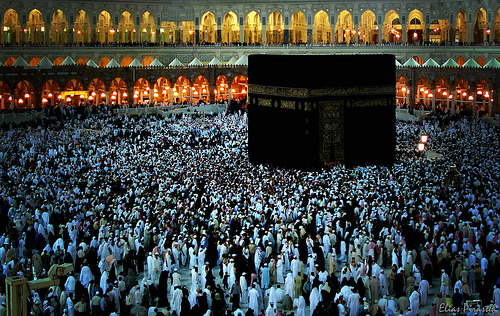The Kaaba, located in the heart of Masjid Al-Haram in Makkah, stands as the most revered and spiritually significant structure in Islam. Known as the House of Allah, it is the direction of prayer for over a billion Muslims worldwide and the focal point of the annual Hajj pilgrimage. Each year, millions of believers from all corners of the globe gather in Makkah, performing acts of worship around the Kaaba in devotion to the one true God, Allah.
While its spiritual significance is universally known, there are lesser-known historical and structural details about the Kaaba that deepen its profound legacy in Islam. Here are nine noteworthy facts that every Muslim should know.
The Kaaba has undergone several phases of reconstruction throughout its long history. Although it was famously rebuilt by Prophet Ibrahim (AS) and his son Prophet Ismail (AS), the current structure differs from that era due to renovations carried out during the lifetime of Prophet Muhammad (PBUH) and subsequent generations. The most significant modern reconstruction took place in 1996, which involved the replacement of worn-out stones and reinforcement of its foundational structure to ensure long-term stability.
Historically, the Kaaba was designed with two doors—one for entry and another for exit—and even featured a window on one side. In its present state, only one functioning door remains, while the other, now sealed and visible only during rare weather conditions, stands as a quiet reminder of the Kaaba’s original layout.
Contrary to what many assume today, the Kaaba was not always draped in black cloth. The tradition of the black Kiswah began during the Abbasid era, whose ruling dynasty favored the color black. Before that, the Kaaba was clothed in different colors over the years, including green, red, and white, reflecting the customs of earlier Islamic periods.
One of the most respected honors in Islamic history is holding the key to the Kaaba. Following the conquest of Makkah, Prophet Muhammad (PBUH) entrusted the keys to Osman ibn Talha of the Bani Shaiba family. This sacred custodianship has been maintained within the same family lineage ever since, symbolizing a legacy of trust and honor that continues to this day.
In earlier times, the Kaaba was open to all worshippers, and people were freely allowed to enter the sacred interior. However, with the rise in global attention and the need for security and preservation, access was restricted. Today, only a select group of individuals—including heads of state, kings, and dignitaries—are occasionally granted permission to enter.
Before the development of Makkah’s advanced drainage systems, the city would often flood during heavy rains. Being at the lowest point in the area, the Kaaba itself would become submerged. Remarkably, worshippers would swim in the flooded courtyard to perform the Tawaf, encircling the Kaaba while partially submerged in water.
The sacred Black Stone, or Hajar al-Aswad, which is mounted in the corner of the Kaaba, is today held together by a silver casing. This is because the stone was once stolen and later returned in fragmented pieces. During the 10th century, an Ismaili sect from Bahrain attacked Makkah, killed pilgrims, and desecrated the Kaaba, even dumping bodies into the Zamzam well. They took the Black Stone to Kufa in Iraq and held it for ransom. It was eventually retrieved during the Abbasid Caliphate, but it had already been broken into several pieces by then.
A unique aspect of praying inside the Kaaba is that worshippers are free to face any direction. Since the Kaaba itself is the Qiblah, any direction within its walls is valid for prayer, making it a rare and spiritually uplifting experience for those fortunate enough to enter.
The door of the Kaaba is only opened twice a year for ceremonial purposes. During these moments, the interior is cleaned and perfumed in a revered process attended by selected dignitaries and custodians of the holy mosque.
These facts not only highlight the historical and architectural importance of the Kaaba but also serve as a reminder of the deep spiritual connection Muslims hold with this sacred site. The Kaaba remains a symbol of unity, direction, and unwavering devotion for the global Muslim Ummah.
